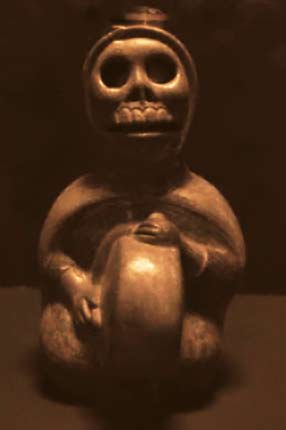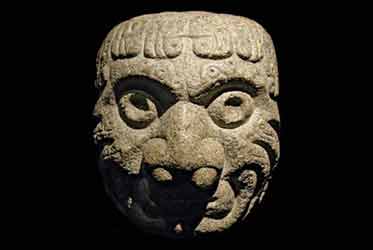“You really like the dark, don’t you?” one of the recent participants of the Pachakuti Mesa Tradition Apprenticeship series asked me, as I turned out the lights. My beloved Autumn and I were teaching the first of the five-part weekend intensive series, The Call to Heal: Releasing the Past.
“Of course,” I answered with a crafty grin. “Why wouldn’t I? It’s a part of who I am!”
In the Andean perspective, The Teqsemuyu, or Universe, is made up of three worlds. Called pachas, these worlds construct the building blocks of our experience as conscious beings. The first of these three worlds one often encounters during shamanic initiation is the Ukhupacha, commonly called the Lower World. Synonymous with other “underworld” archetypes throughout numerous mythologies, the Ukhupacha is a realm less of a cavernous nether region full of demonic forces and more of personal domain of consciousness. The root Quechua word ukhu– refers to the within, the interior.
Many indigenous cultures throughout the world have emulated the practice of traveling to this inner world by enacting real world scenarios in sacred rituals. The Lakota have their Inipi (sweat lodge), the Pueblo their kiva, the Neolithic temples of Malta, the meditation caves of Guru Rinpoche, the underground labyrinth at Chavin de Huantar, and so on. The goal of immersing oneself in these dark spaces is to disperse the world of the senses which constantly pervades us. This brings an inherent focus we rarely achieve in today’s world of constant artificial lighting, its buzzing array of sound pollution, and the frantic static of social media bombardment. In short, we are over-stimulated.
As the darkness of the Ukhupacha envelops us like a warm blanket, our concentration and inner vision thrive. As relayed by German ethnopsychologist Holger Kalweit, this sort of ceremonial replication of outer world phenomena heightens the inner world state:
“Outer calm brings inner calm, absence of external stimuli leads to a state of inner emptiness. Without this emptiness there can be no mental equilibrium, and thus, no access to cosmic harmony and life-giving energy.”1
 So, I do indeed love the darkness and believe we – every human being – should embrace it. It’s true the inner world is full of shadowy things, aspects of our selves that may bring up fear and pain…it is, after all, rooted in the past. Our inner plane of the psyche, which Sigmund Freud called the id, can contain all kinds of nasty things. When left unattended, these nasty things have a habit of rupturing into our lives in ways that often take us by surprise, sabotaging our opportunities for success, or derailing our relationships. Keep making that same mistake over and over again? It’s because somewhere in the Ukhupacha lies some aspect of yourself, possibly some incident from your past, left unresolved. This is called repression.
So, I do indeed love the darkness and believe we – every human being – should embrace it. It’s true the inner world is full of shadowy things, aspects of our selves that may bring up fear and pain…it is, after all, rooted in the past. Our inner plane of the psyche, which Sigmund Freud called the id, can contain all kinds of nasty things. When left unattended, these nasty things have a habit of rupturing into our lives in ways that often take us by surprise, sabotaging our opportunities for success, or derailing our relationships. Keep making that same mistake over and over again? It’s because somewhere in the Ukhupacha lies some aspect of yourself, possibly some incident from your past, left unresolved. This is called repression.
With all this, the Ukhupacha in relationship to the mesa can also be our brightest hope. don Oscar Miro-Quesada has said, “Coming into a place of deep acceptance of and release of all that torments us about our actions or inactions is an important aspect of being able to trust soul.”2 The Ukhupacha is known as the realm of soul growth, in the same way a gardener would seed the ground during the darkness of the new moon.
One of the primary medicine pieces participants are introduced to on the first weekend of Apprenticeship is the purunilla. A compound of two words (purun = wilderness/barren landscape; illa = light) the purunilla is itself an ally. It is a guiding light in the Ukhupacha, designed to assist the practitioner through the recesses of the inner world. It is a paradoxical mastery over darkness.
The mesa teaches us that we cannot resist the darkness. Facing ones fears and past is integral to the process of initiation, essential to transformation. Without darkness, we would not have the opportunity to shine the light that exists within each one of us.
So, it came as no surprise to my beloved and I as we did our work in the darkness of the Ukhupacha – where the participants all faced and embraced their inner world – that each one of them returned to this world glowing so brightly we didn’t even have to turn the lights back on to see them.
1Kalweit, Holger. Dreamtime & Inner Space: The World of the Shaman (London: Shambala Publications, Inc., 1988) 199
2Glass-Coffin, Bonnie and don Oscar Miro-Quesada. Lessons in Courage: Peruvian Shamanic Wisdom for Everyday Life (Faber, VA: Rainbow Ridge Books, LLc, 2013), 16
About the Author
Daniel Moler is a writer, artist, and sanctioned teacher in the Pachakuti Mesa Tradition. He is the author of Shamanic Qabalah: A Mystical Path to Uniting the Tree of Life and the Great Work from Llewellyn Worldwide, Machine Elves 101, RED Mass, as well a contributor in Ross Heaven’s book on Peruvian healing Cactus of Mystery and Llewellyn’s 2020 Magical Almanac. He has published fiction and nonfiction works around the world in magazines, journals, gaming modules, and online, including: GrahamHancock.com, Positive Health Magazine, Cannabis Culture, The Tattooed Buddha, Sacred Hoop, and A Journal of Contemporary Shamanism. Visit Daniel online at www.danielmolerweb.com.





